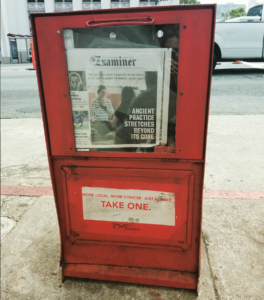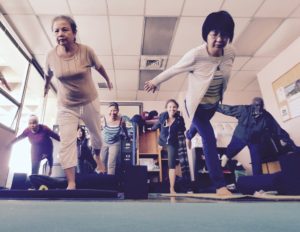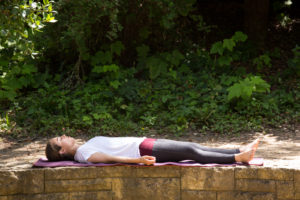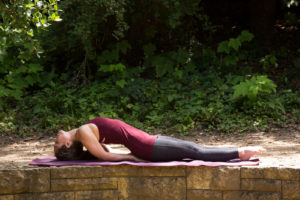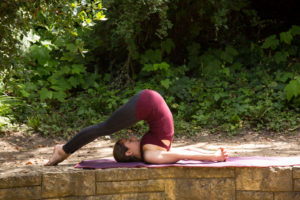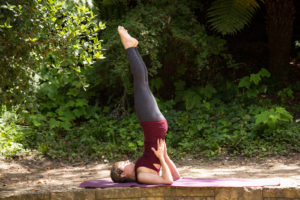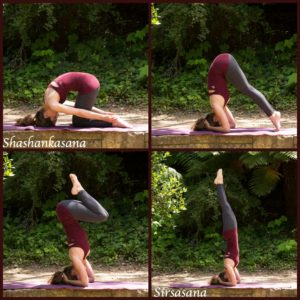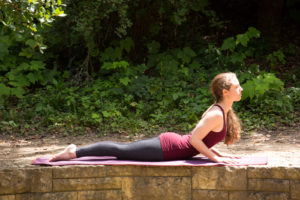Back in June a couple of young ladies, Audrey Garces and Sarahbeth Maney, from the SF Examiner joined my Wednesday morning yoga class at Silver Avenue Family Health Center. They were summer interns at the paper and had seen an email asking if anyone wanted to run a story about our free community yoga class. Audrey and Sarahbeth seemed young and even said they were interns only for the summer, so I suspected the story would be tucked away somewhere deep in the paper. I was surprised to find on Sunday July 9th that their story and a picture of me was on the front page of the SF Examiner. In fact, the website had the article under ‘Breaking News’ for a few hours that day. :0
SF Examiner across the street from my building July 9th
It’s a good article and touches on the importance of yoga accessibility. Yoga accessibility has become a pretty big part of my career. I don’t currently have any studio affiliation. I work mostly with kids in school at their schools and beyond that I go to the health center and the Indiegogo offices. When I teach I am bringing class to the students rather than asking my students to find me. I believe this is important because, for most of the people I teach, there might be no other access to class or perhaps no real introduction to yoga beyond large scale media messages. Limited access can be caused by any number of reasons including a busy schedule, costs, or physical limitations.
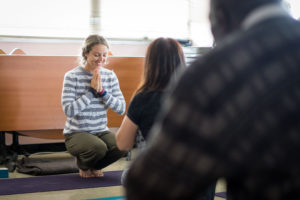
“Jaedra DiGiammarino instructs a yoga class at the Silver Avenue Family Health Center in San Francisco, Calif. Wednesday, June 28, 2017. (Sarahbeth Maney/Special to S.F. Examiner)”
Of the approximately 20 million people practicing yoga in the United States about 82% are women 68% are earning over $75,000 annually, and 71% are college graduates according to the video Yoga Diversity:Introduction. At this point these statistics are not at all shocking because it is precisely this young, educated, affluent demographic that is the receiving end of almost all yoga marketing. I have yet to see a yoga brand (clothing, mats, props etc.) with a model older than about 29. A cursory google images search of “yoga wear for seniors” might have mistaken seniors, meaning men and women over about 60, for seniors in high school as none of the models appear to be more than 18. I don’t think there is anything wrong with young affluent women practicing yoga. And perhaps it’s a good thing that no one is marketing to older or underserved demographics yet because you don’t need $100 pants or a $30 yoga block to practice yoga. You just need a little space. I believe there are many many students not yet practicing who might like and benefit from yoga study. In fact it was my now 87 year old grandfather, a former educator himself who started practicing yoga long after retirement, that just a few years ago mentioned perhaps having yoga in every school would be a great benefit to students and society as a whole.
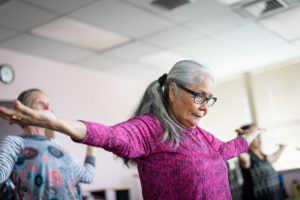
Teresita Datu participates in a yoga class at the Silver Avenue Family Health Center in San Francisco, Calif. Wednesday, June 28, 2017. (Sarahbeth Maney/Special to S.F. Examiner)
Right now yoga seems like a trend but, it’s an ancient practice with benefits gaining merit through modern research. It’s here to stay. While having a yoga teacher at school seems luxurious right now I hope that in the not too distant future schools will have a yoga and wellness educator in the same way that we currently have a PE coach or an English/Social Studies teacher. Additionally, health centers will become places of real health, rather than where you go only when you are sick. People will see their doctor for preventative care, advice on things like nutrition and exercise which will be readily available through services like food education and our humble class at Silver Avenue Family Health Center.

